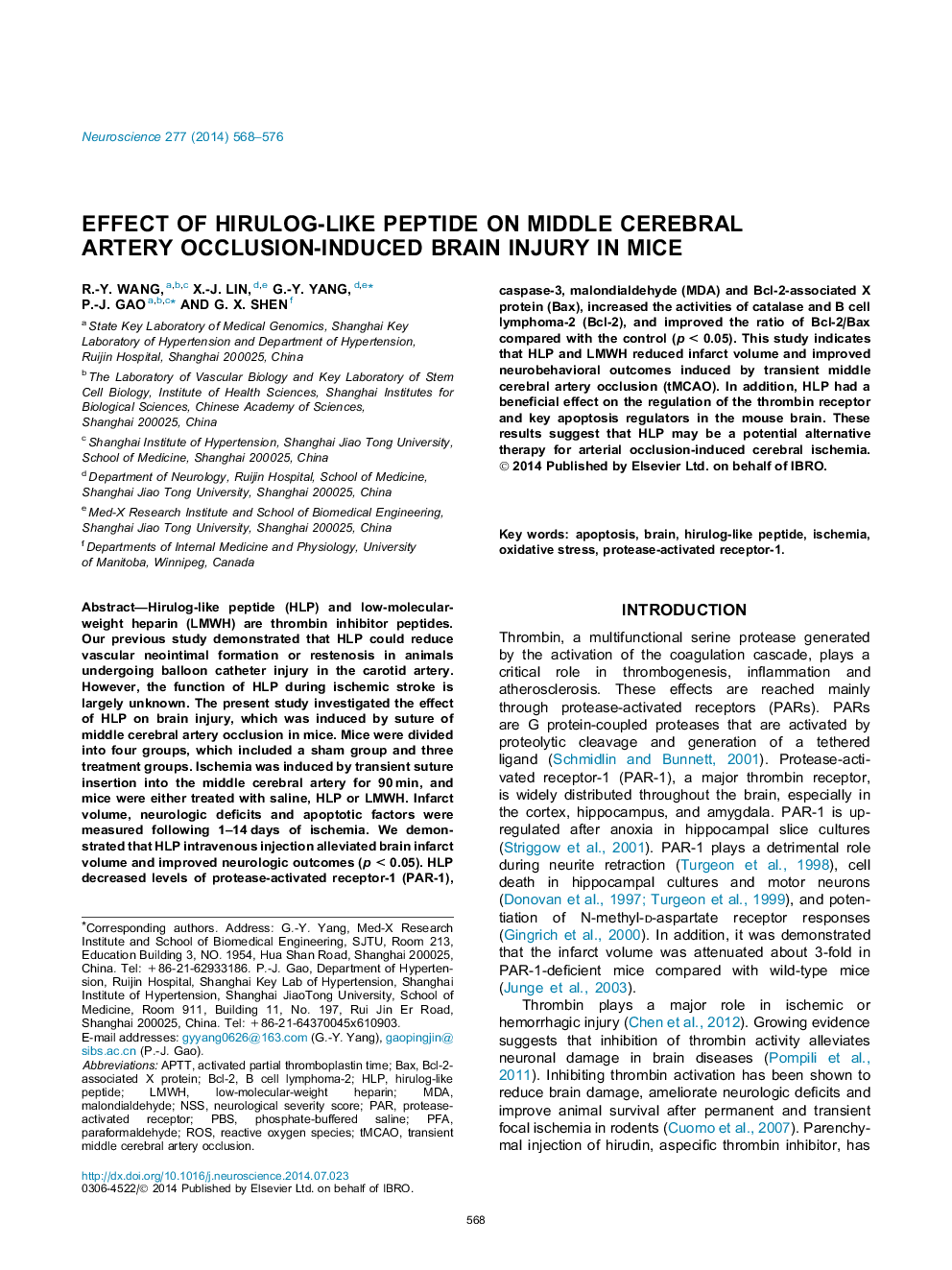| Article ID | Journal | Published Year | Pages | File Type |
|---|---|---|---|---|
| 6273690 | Neuroscience | 2014 | 9 Pages |
Abstract
Hirulog-like peptide (HLP) and low-molecular-weight heparin (LMWH) are thrombin inhibitor peptides. Our previous study demonstrated that HLP could reduce vascular neointimal formation or restenosis in animals undergoing balloon catheter injury in the carotid artery. However, the function of HLP during ischemic stroke is largely unknown. The present study investigated the effect of HLP on brain injury, which was induced by suture of middle cerebral artery occlusion in mice. Mice were divided into four groups, which included a sham group and three treatment groups. Ischemia was induced by transient suture insertion into the middle cerebral artery for 90 min, and mice were either treated with saline, HLP or LMWH. Infarct volume, neurologic deficits and apoptotic factors were measured following 1-14 days of ischemia. We demonstrated that HLP intravenous injection alleviated brain infarct volume and improved neurologic outcomes (p < 0.05). HLP decreased levels of protease-activated receptor-1 (PAR-1), caspase-3, malondialdehyde (MDA) and Bcl-2-associated X protein (Bax), increased the activities of catalase and B cell lymphoma-2 (Bcl-2), and improved the ratio of Bcl-2/Bax compared with the control (p < 0.05). This study indicates that HLP and LMWH reduced infarct volume and improved neurobehavioral outcomes induced by transient middle cerebral artery occlusion (tMCAO). In addition, HLP had a beneficial effect on the regulation of the thrombin receptor and key apoptosis regulators in the mouse brain. These results suggest that HLP may be a potential alternative therapy for arterial occlusion-induced cerebral ischemia.
Keywords
Related Topics
Life Sciences
Neuroscience
Neuroscience (General)
Authors
R.-Y. Wang, X.-J. Lin, G.-Y. Yang, P.-J. Gao, G.X. Shen,
